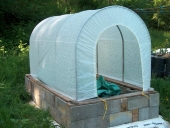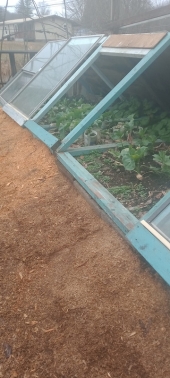




Some places need to be wild




 1
1




An important distinction: Permaculture is not the same kind of gardening as organic gardening.
Mediterranean climate hugel trenches, fabuluous clay soil high in nutrients, self-watering containers with hugel layers, keyhole composting with low hugel raised beds, thick Back to Eden Wood chips mulch (distinguished from Bark chips), using as many native plants as possible....all drought tolerant.








Some places need to be wild




Some places need to be wild




Please give me your thoughts on my Affordable, double-paned earthbag window concept

















 1
1












Forever creating a permaculture paradise!
 2
2





Building soil in the Yukon.




Chris Sturgeon wrote:I built mine out of cob. The cost was zero dollars, the time was 3 months.

They do an amazing job... I filled them with rotted wood, branches, chips, leaves, compost and soil. The thermal mass warms up before the ground and stays warm through the night. After the seedlings are tall enough, a good deep watering and mulching, there is very little need to water again.
Please give me your thoughts on my Affordable, double-paned earthbag window concept

















 1
1




Some places need to be wild




Building soil in the Yukon.

|
You can thank my dental hygienist for my untimely aliveness. So tiny:
12 DVDs bundle
https://permies.com/wiki/269050/DVDs-bundle
|





